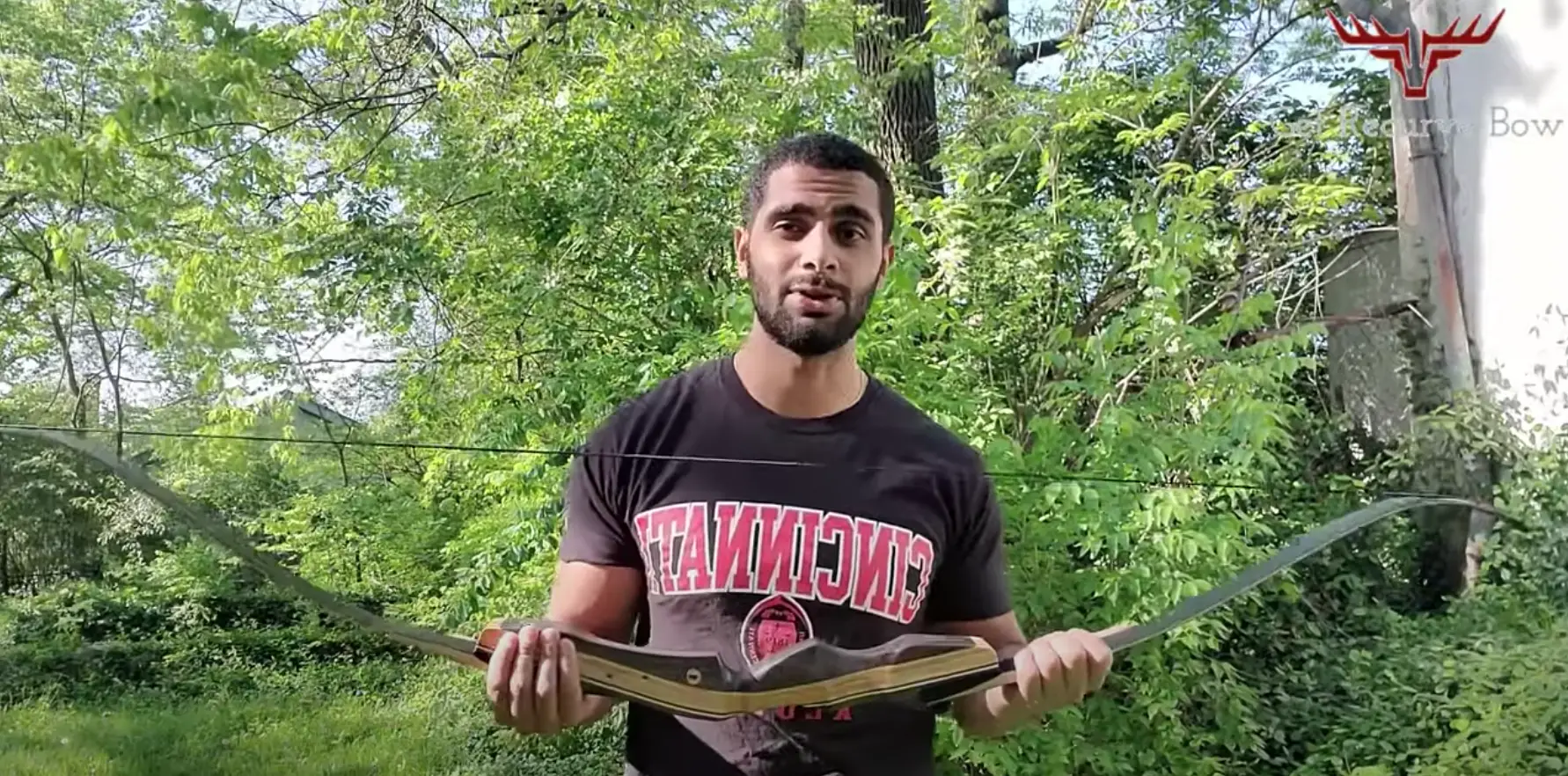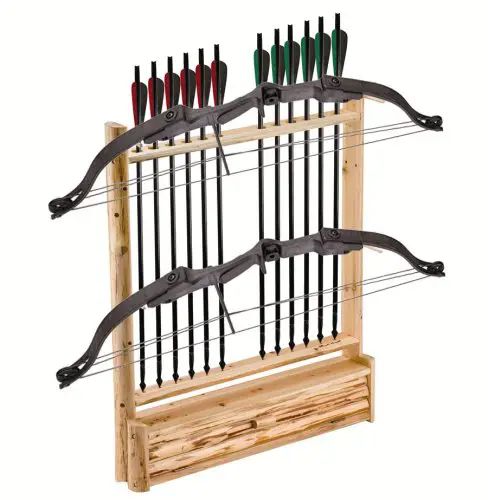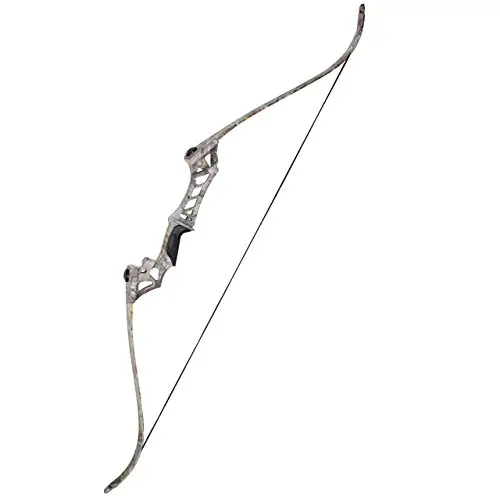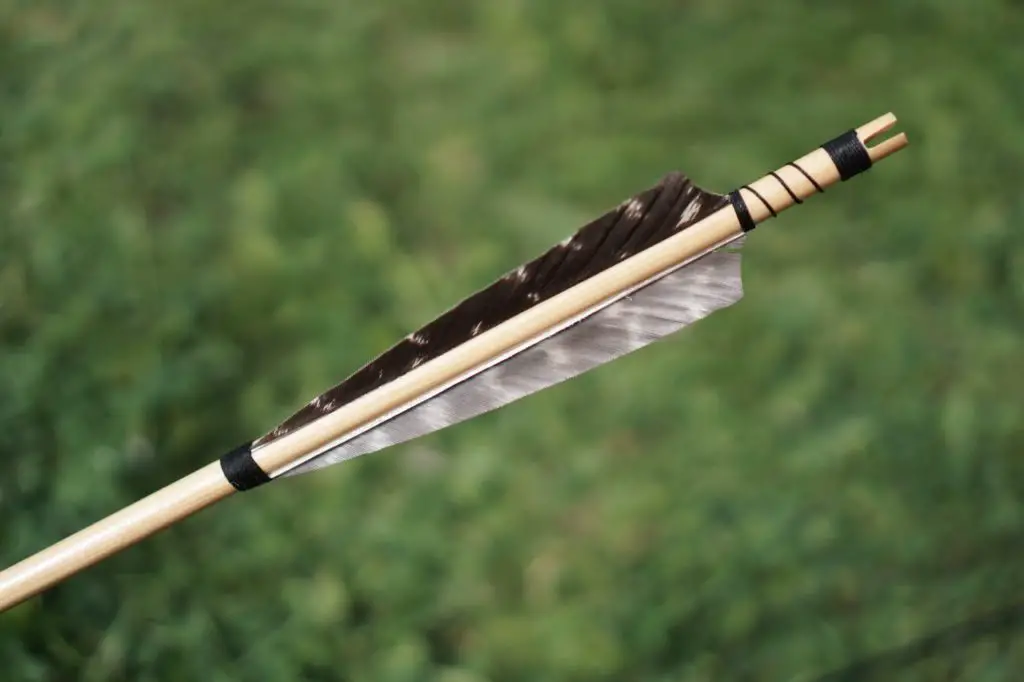
Whether you’re an archery newbie or seasoned at the sport, you may be faced with the question of recurve vs. longbow when looking to make your next bow purchase.
Even if you’ve always used just one, it may be time to explore trying the other.
In recurve vs. longbow, there are advantages with both.
Since the recurve has the classic ‘three’ shape that most recognize as a bow, we’ll start there.
The pros and cons of the recurve bow.
The recurve has limbs that bend into a half-moon shape and start to bend back out at the tips. This special shape gives the recurve bow more power than the longbow.
Since it has more power, the recurve can shoot with more speed and has a faster per pound of draw weight.
The recurve is wider than the long bow but thinner in depth. This can be a possible drawback because the reduction in thickness could result in a torquing of the limbs if your form is off.
And that means it’s also going to be less forgiving to shoot.
Still, the recurve is available in shorter lengths while still providing the same power. And that makes it ideal if you need a bow in the bushes or any other tight space.
Most archers find that recurves tend to be a little louder, which isn’t usually a big deal. They also:
- provide for more center shot
- offer an easier sight picture
- are more forgiving to spine matching
Finally, the recurve has a highly-sculpted grip and is a little heavier in hand than the longbow. This makes them easier to shoot with, especially for those who shoot a high wrist.
With the ease of use, the recurve is a good beginner’s bow. And there are really very few cons.
The pros and cons of the longbow.
Simply put, a long bow is a forgiving bow. But it’s simply not as fast or powerful a the recurve.
Like the recurve, it has that traditional half-moon shape. But it has a straight grip.
Unlike the recurve, it is thin in width, but thicker in depth. This makes it more difficult for those with poor form to torque the limbs when drawing the string back. This shape also ensures that the arrow will fly straighter.
Since the long bow is longer, there is less pinching on the fingers when the string is drawn back. There’s also less friction on the fingers once the string is released.
A longbow allows you to shoot with the heel of your hand down so that it’s potentially more comfortable to shoot in those less than ideal conditions.
Plus, on a sillier note, a longbow can be used as a walking stick. And since the upper tip is usually carved sharp, you could use it as a spear if you run out of arrows.
Of course, we hope it doesn’t come to that!
If you have any thoughts or opinions on the recurve vs. longbow argument, we’d love your input. Feel free to comment below.
For More Information Regarding Some Of The Best Recurve Bows Ever Made, Check Out Our Recurve Bow Buying Guide!

Archery is my hobby & I usually hunt and play on weekends and after work. It’s a passion since I was very young and I love writing about it as well to continuously learn more and share the love of archery with others!





